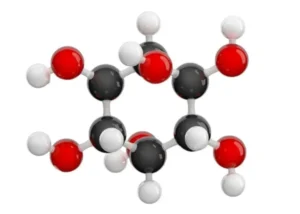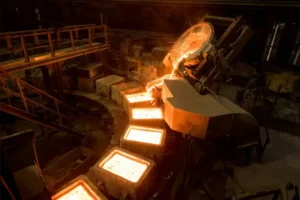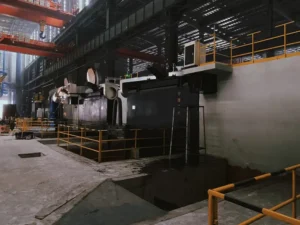In induction melting technology, the seemingly calm liquid metal in the molten bath is, in fact, turbulent with unseen currents. This powerful driving force originates from the principles of electromagnetic induction and is known as the Electromagnetic Stirring (EMS) effect. It is both a key to efficient melting and ensuring alloy homogeneity, and a “double-edged sword.” The intensity of this effect directly impacts melting speed, temperature uniformity, and even the service life of the furnace lining. This article will provide an in-depth analysis of the mechanism behind electromagnetic stirring and detail how this effect can be optimized through power regulation to achieve the best melting results.
The Origin of Electromagnetic Stirring Force: Rooted in the Physical Laws of Faraday and Lorentz
The core of an induction furnace is an induction coil powered by an alternating current of medium frequency (সাধারণত 150 Hz থেকে 10 কেএইচজেড) or mains/power-line frequency (50/60 Hz). According to Faraday’s Law of Induction, the changing current creates a fluctuating magnetic field around the coil. This magnetic field penetrates the furnace lining and induces eddy currents within the conductive metal charge (the molten bath).
A critical interaction occurs between these induced eddy currents and the magnetic field generated by the induction coil. According to the Lorentz Force law, when charged particles (in this case, electrons in the eddy currents) move within a magnetic field, they are subjected to a force. The direction of this force is perpendicular to both the direction of the current and the direction of the magnetic field. On a macroscopic scale, this force manifests as a thrust on the entire volume of molten metal.
In a typical coreless induction furnace, the interaction between the magnetic field and the induced eddy currents creates a unique “double-loop” flow pattern within the molten bath:
- Upward Movement: In the central region of the bath, the liquid metal is pushed upwards, forming a convex surface known as a “meniscus.”
- Downward Movement: Near the furnace walls, the liquid metal flows downwards, completing the circulation loop.
This natural convection, driven by electromagnetic forces, is electromagnetic stirring. Its intensity is closely related to the frequency and power of the induction current:
- ফ্রিকোয়েন্সি: The lower the frequency, the deeper the penetration of the magnetic field, resulting in a wider area of force application and a stronger overall stirring effect. The stirring force in a mains frequency furnace (50/60 Hz) is generally much stronger than in a medium frequency furnace.
- Power: Higher power leads to a stronger current in the induction coil, which in turn generates a more intense magnetic field and stronger induced eddy currents. This results in a greater Lorentz force and, consequently, a more vigorous stirring action.
The Dual Impact of Stirring Force: A Balance of Optimization and Challenges
Electromagnetic stirring has a comprehensive impact on the melting process. A stirring force that is either too strong or too weak will lead to a series of problems. Achieving optimal melting control lies in understanding and balancing its advantages and disadvantages.
| Aspect Affected | Weak Stirring | Strong Stirring | Optimized Effect |
| Alloy Melting Speed | Low heat transfer efficiency. Newly added, colder charge materials (especially light, thin scrap) struggle to submerge into the hot bath, melt slowly, and are prone to surface oxidation loss. | The surface tension of the melt is broken, and oxide films are continuously drawn into the liquid metal, forming inclusions. Lighter alloying elements (যেমন, অ্যালুমিনিয়াম, ম্যাগনেসিয়াম) may suffer increased oxidation loss due to violent tumbling. | Moderate stirring gently draws new charge materials deep into the bath, utilizing the heat of the entire melt for rapid melting while keeping the surface relatively stable to reduce oxidation and metal loss. |
| Temperature Uniformity | Large temperature differential between the top and bottom of the bath. Induction heating is concentrated in the upper-middle section near the coil, leaving the bottom cooler, which can create a “cold zone” and hinder the complete dissolution and diffusion of alloys. | Although the temperature is uniform, the intense flow can create localized hotspots, accelerating the volatilization of certain elements. | Effective stirring promotes heat exchange throughout the entire bath, eliminates “cold zones,” and ensures a highly consistent temperature (differential can be controlled within 5-10°C), creating ideal conditions for precise composition control and pouring. |
| Compositional Homogeneity | Newly added alloying elements (especially those with a large density difference) dissolve only in the upper portion of the bath and are slow to distribute throughout the melt. This leads to inaccurate sampling and chemical segregation in the final casting. | While it can mix alloys quickly, the violent surface action can entrap more gas and slag, increasing the risk of inclusions and potentially compromising the cleanliness of the final product. | Ideal stirring acts like an efficient mixer, gently and rapidly transporting alloying elements to every corner of the bath. This achieves rapid macroscopic homogenization of the chemical composition and is a key guarantee for producing high-quality alloys. |
| আস্তরণের ক্ষয় | The erosive effect is weak, with minimal impact on the lining’s lifespan. | The powerful flow of liquid metal creates continuous mechanical scouring and erosion on the furnace walls, especially at the slag line (the interface between the melt and the slag layer). This significantly shortens the lining’s service life and increases maintenance costs and downtime risk. | By using the lowest possible stirring intensity that still meets melting requirements, the physical wear on the refractory lining can be effectively slowed, extending its operational cycle. |
Achieving Precise Control Through Power Regulation
Given that the intensity of the electromagnetic stirring force is directly proportional to the applied power, adjusting the input power is the most direct and effective method for controlling the stirring effect. Different power strategies should be employed during the various stages of the melting process:
- Melting Stage: The primary goal in this phase is to rapidly transform the solid charge into a liquid state. ক higher power level can be used to leverage the strong electromagnetic stirring force to quickly pull new charge materials into the hot molten bath, accelerating the melting rate and improving thermal efficiency.
- Superheating & Alloying Stage: Once the charge is fully molten, the main tasks are to raise the temperature to the target level and adjust the chemical composition. At this point, excessively vigorous stirring is unnecessary and can increase lining erosion and metal loss. The power should be appropriately reduced to maintain a state of “gentle stirring” that is sufficient to ensure temperature and composition uniformity. This mild agitation aids in the dissolution and diffusion of alloying elements while allowing inclusions time to float to the surface for removal during deslagging.
- Holding & Pouring Stage: During this phase, the goal is simply to maintain the temperature of the liquid metal. দ্য lowest possible holding power should be used. The stirring force at this level is very weak; it prevents the formation of a “cold zone” at the bottom of the bath while minimizing lining wear and gas absorption, keeping the melt stable and clean in preparation for high-quality pouring.
উপসংহার
Electromagnetic stirring is an intrinsic physical effect of the induction melting process. It is the “invisible hand” that enables rapid melting and ensures uniform temperature and composition, but it can also be the “culprit” behind premature lining failure and metal oxidation. A profound understanding of its generation mechanism and the ability to master its intensity by precisely regulating power during different melting stages are core skills for modern foundry and metallurgical engineers. Ultimately, the masterful control of electromagnetic stirring is the key to balancing the delicate relationship between melting efficiency, পণ্যের গুণমান, and production cost.







